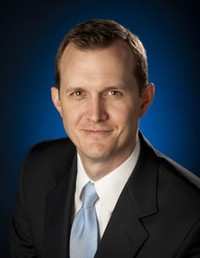Fri, Aug 03, 2012
Testimony On Emerging Markets Offered To House Subcommittee
The House Subcommittee on Space and Aeronautics held a hearing Thursday to examine the potential launch markets and applications for suborbital reusable launch vehicles (SRVs). The development of new commercial SRVs by the private sector has led to the emergence of potential new markets. A number of companies are already testing new vehicles and plan to initiate commercial operations within a few years. Witnesses today discussed the unique benefits that SRVs offer the scientific community for research, and the regulatory uncertainties that currently have the most impact on the emerging commercial SRV industry.

"Many in the research community are hopeful to exploit the unique microgravity environment of suborbital flight with economical, routine access that enables expanded human research, atmospheric research, and microgravity biological and physical research. Space tourism proponents are optimistic that a safe, operational system will be developed to support their business ambitions,” said Subcommittee Chairman Steven Palazzo (R-MS) (pictured). “Yet there are significant technical, financial, and regulatory challenges to be overcome before these hopes can be realized.” Chairman Palazzo encouraged industry “to work closely with the FAA, so that they will be able to draft effective regulations in 2015, and diminish the chance that these regulations will stifle the industry.”
To date, six companies have made progress developing different concepts for SRVs that are all powered by rocket engines. The Tauri Group recently completed a study for the FAA and Space Florida forecasting the 10-year demand for suborbital reusable vehicles (SRVs). According to Ms. Carissa Christensen, managing partner of The Tauri Group, “Our study concluded that demand for SRV flights at current prices is genuine, sustained, and appears sufficient to support multiple providers.”
Although the companies have not started commercial operations yet, the forecast predicts the largest market will be for commercial human spaceflight for individuals. “We estimate it is more than 80 percent of the total. Given current prices, most of these individuals will be wealthy. Many will be from outside the United States.” Mr. Brett Alexander, Director of Business Development and Strategy at Blue Origin said today that his company “is focused on enabling human access to space,” further stating that “people are the game-changing element for spaceflight.”
XCOR’s Chief Operating Officer, Mr. Andrew Nelson, presented the motivation behind his company. “Our vision starts with the premise of ‘human settlement’ and economic prosperity from space-based businesses and ventures that may drive prosperity for generations,” Nelson said.

Representing Virgin Galactic, CEO Mr. George Whitesides (pictured), discussed milestones that have helped enable the development of commercial spaceflight. Mr. Whitesides said that “the successful flights of the world’s first privately built manned spacecraft and Congress’s protection of this critical freedom to learn and grow helped convince entrepreneurs like our founder, Sir Richard Branson, that commercial human spaceflight was a worthy field for investment, and the United States of America was the only country on the planet in which this industry could begin.”
Current law prohibits the FAA from issuing regulations on human spaceflight until October 2015. Until then, the FAA will engage with industry participants who can share views on how to improve safety, without proposing burdensome regulations. Chairman Palazzo said, “Although many challenges still lie ahead, it is my hope that these companies will be successful in creating new opportunities for research and STEM education, as well as commercial human spaceflight.”
More News
Maximum Authorized Altitude A published altitude representing the maximum usable altitude or flight level for an airspace structure or route segment. It is the highest altitude on >[...]
Aero Linx: Soaring Safety Foundation (SSF) The Soaring Safety Foundation (SSF) is the Training and Safety arm of the Soaring Society of America (SSA). Our mission is to provide ins>[...]
From 2013 (YouTube Version): Dracula Lives On Through Kyle Franklin... and We're NOT Scared! ANN CEO and Editor-in-Chief, Jim Campbell speaks with Aerobatic and airshow master, Kyl>[...]
“For Montaer Aircraft it is a very prudent move to incorporate such reliable institution as Ocala Aviation, with the background of decades in training experience and aviation>[...]
Also: ForeFlight Upgrades, Cicare USA, Vittorazi Engines, EarthX We have a number of late-breaking news highlights from the 2024 Innovation Preview... which was PACKED with real ne>[...]
 ANN's Daily Aero-Term (04.14.24): Maximum Authorized Altitude
ANN's Daily Aero-Term (04.14.24): Maximum Authorized Altitude ANN's Daily Aero-Linx (04.14.24)
ANN's Daily Aero-Linx (04.14.24) Classic Aero-TV: 'We're Surviving'-- Kyle Franklin Describes Airshow Life 2013
Classic Aero-TV: 'We're Surviving'-- Kyle Franklin Describes Airshow Life 2013 Aero-News: Quote of the Day (04.14.24)
Aero-News: Quote of the Day (04.14.24) Airborne 04.09.24: SnF24!, Piper-DeltaHawk!, Fisher Update, Junkers
Airborne 04.09.24: SnF24!, Piper-DeltaHawk!, Fisher Update, Junkers




